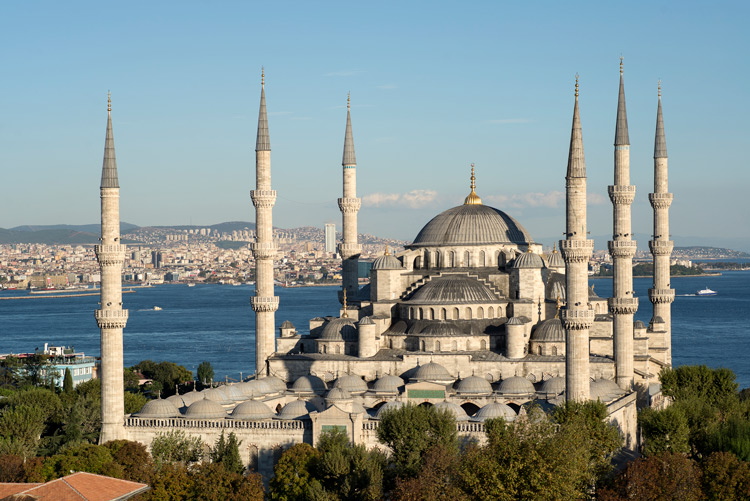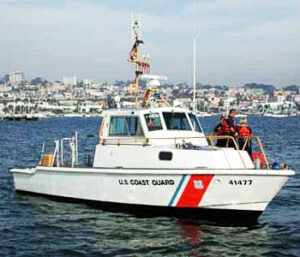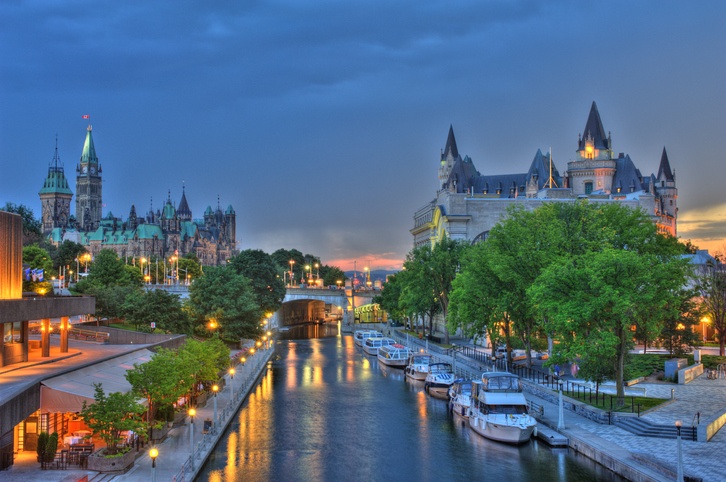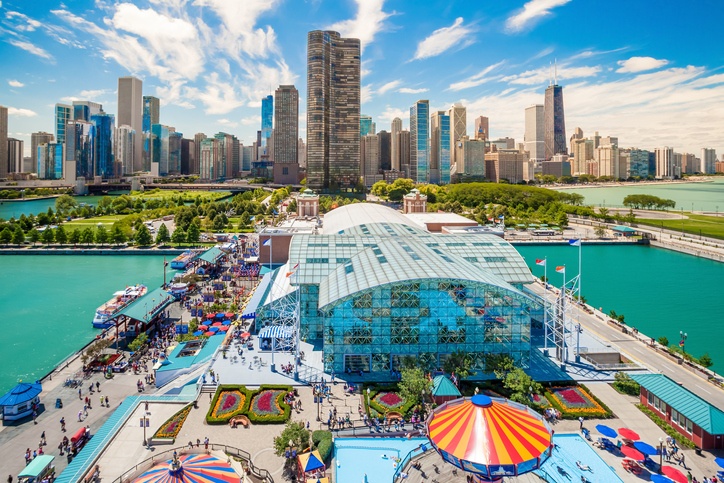A nautical nirvana from sea to land – A boater’s rendezvous with Istanbul, Ankara, and Cappadocia, Turkiye – Part 1

Estimated reading time: 10 minutes – ABR* – Prepare to embark on a voyage that combines the thrill of sailing with the enchantment of exploring Turkey’s rich history and culture on land. In this three-part adventure, we’ll set sail on the sparkling waters of the Bosphorus, navigate the bustling streets of Istanbul, and venture into the heart of Anatolia. So, grab your captain’s hat and join us as we uncover the hidden gems of Istanbul, Ankara, and magical Cappadocia.
Touch down in Istanbul, a UNESCO World Heritage Site, where history waltzes gracefully with modern vibrancy. An exhilarating blend of East and West, Istanbul welcomes you with open arms and a promise of unforgettable experiences. Allow the city’s charm to bewitch your senses, and take the first few days to delve into its rich history, bustling markets, and scrumptious cuisine. Of course, for us pleasure boaters, sailing in the Bosphorus and the rest of the waterways of Istanbul is an experience not to be missed.
Bosphorus – Where East Meets West
The Bosphorus, a legendary waterway, connects the landlocked Black Sea to the Sea of Marmara and eventually the Aegean and Mediterranean Seas. It stretches 19 miles (31 kilometers) with a width ranging from half a mile to two miles (730-3,300 meters). As you sail north, Europe lies to your left, while Asia stretches to your right. At its narrowest point, two historic Ottoman fortresses straddle this highly strategic strait, with the Rumeli Hisarı on the European side, facing the Anadolu Hisarı on the Asian side.
With a maximum depth of 360 feet (110 meters), the Bosphorus boasts a two-layer current system that flows vigorously, akin to a river. The surface current flows from the Black Sea in the north to the Mediterranean in the south, transporting Black Sea waters through the Sea of Marmara and then to the Aegean Sea via the Dardanelles Strait. Meanwhile, the subsurface counter-current moves in the opposite direction, transferring higher-density saline water from the Sea of Marmara to the Black Sea. This lower layer is known to be warm in the winter and cool in the summer. The two layers are separated by a 82-foot pycnocline or separation layer, which prevents a vertical current from forming.
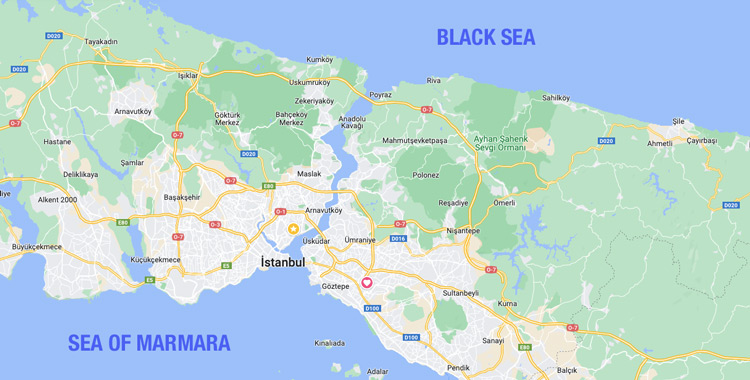
Navigating the strait can be challenging due to the swift currents that flow from north to south, creating swirls and eddies. Additionally, northern winds add to the complexity, making the Bosphorus highly difficult to navigate.
The Bosphorus serves as a vital and strategic natural shipping channel. The increasing number of vessels passing through this strait has made it one of the world’s busiest maritime routes. Annually, it accommodates around 48,000 ships, in addition to local traffic. Reportedly, maritime traffic here is three to four times denser than that of the Suez Canal and the Panama Canal. Between 1953 and 2002, there were 461 maritime incidents in the Bosphorus or at its southern entrance in the Sea of Marmara. These were mostly collisions, some of which resulted in large merchant ships colliding with the shore at narrow points, causing significant damage.
If you plan to visit Istanbul with your own boat, you can certainly do so, just like many large cruise ships and super yachts. However, if you’re arriving by air or land and hope to rent a boat without a captain, you might face some challenges. Pleasure boat rental companies typically require their own captain onboard. Navigating the waters of the Bosphorus, even if you’re an experienced boater, can be complex and demanding. It’s often best to relax and enjoy your tour of Istanbul from the sea with a charter boat captain to guide you. There are charter boats to suit various budgets, all well-equipped to satisfy even the most discerning visitors. Rest assured, it’s an experience you won’t soon forget.
Istanbul by sea
As we gently cast off our lines, a profound sense of timelessness lingers in the sea breeze. Istanbul, the legendary bridge between Europe and Asia, unveils itself before our eyes as a city steeped in history, culture, and culinary splendor.
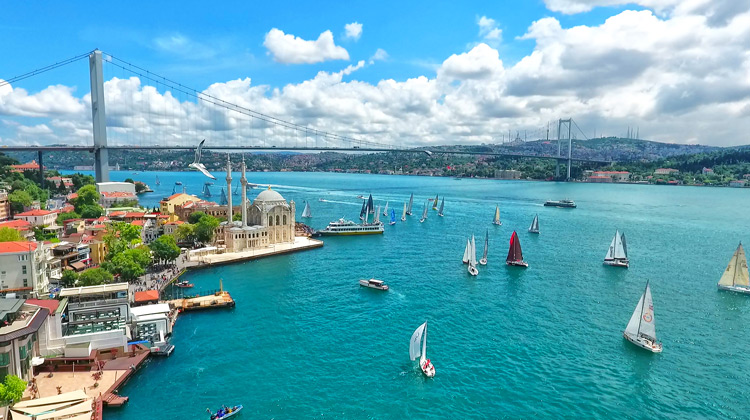
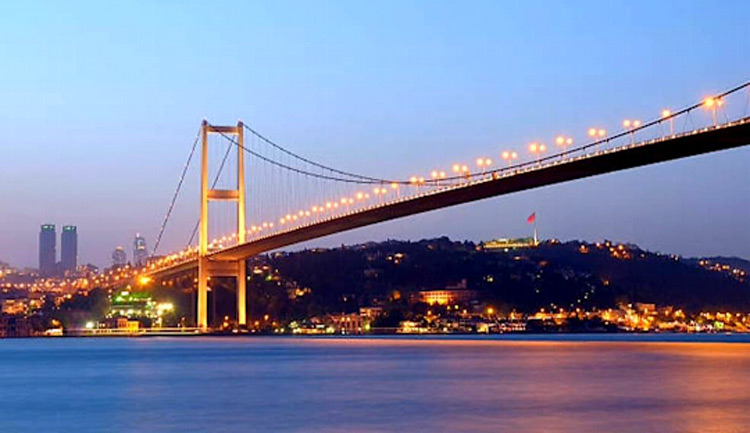
With the Bosphorus beneath our keel, we embark on a journey that highlights the rich tapestry of Istanbul’s heritage. The city’s iconic landmarks, including the grandeur of the Topkapi Palace, the awe-inspiring Hagia Sophia, the serene Blue Mosque, and the ancient Galata Tower, stand as silent witnesses to centuries of history. Their majestic domes and minarets paint a breathtaking panorama that resonates with the echoes of empires long past.
As we continue our boating journey, we become privileged spectators to a living museum. Here, history is not confined to dusty books and static exhibits but is reflected in the shimmering waters of the Bosphorus. Each ripple whispers tales of Istanbul’s historic peninsula that was settled as far back as 6,000 BC. The Crusaders ransacked it when it was called Constantinople, the rich capital city of the Eastern Roman Empire. Traders, conquerors, poets, and sultans, all have navigated these same waters, leaving their indelible mark on today’s Istanbul and its captivating narrative.
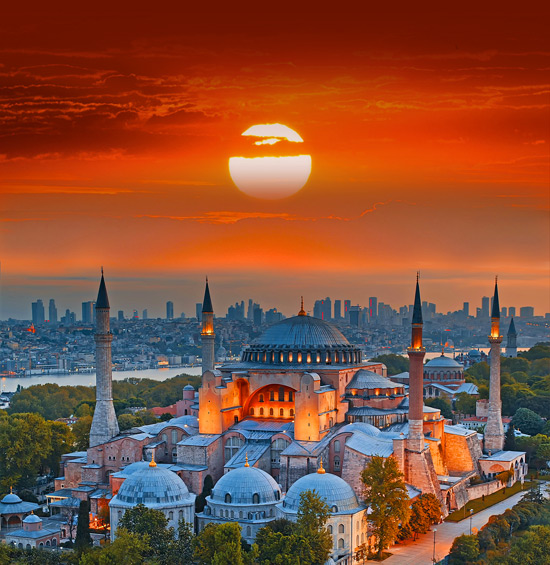
From the deck of our boat, we are treated to a sensory feast. The call to prayer resonates from minarets, creating a mesmerizing melody that echoes across the water.
Istanbul is no relic of the past; it’s a vibrant metropolis teeming with life and innovation. Its bustling streets are a testament to a city that refuses to stand still. With a population of 16 million, this sprawling hub brims with creativity and dynamism. The city is a fusion of modernity and tradition, where centuries-old bazaars coexist with sleek skyscrapers, and historic mosques share the skyline with contemporary art galleries.
As the sun sets over the Bosphorus, Istanbul transforms into a city of enchantment. The city’s lights flicker to life, casting a golden glow on the water’s surface. The reflections of the historic landmarks dance on the waves, creating a magical ambiance that is nothing short of captivating. It’s a moment that etches itself into our memories, a testament to the enduring beauty of Istanbul by the sea.
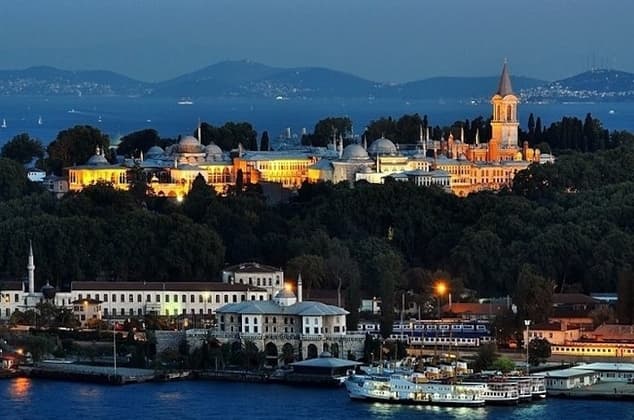
In these moments, as we navigate the timeless waters of the Bosphorus to the Marmara Sea, Istanbul reveals itself as a city of contrasts and harmonies, where past and present coexist in a captivating symphony. It’s a city that leaves an indelible mark on our hearts, an experience that can only be fully appreciated from the unique vantage point of the sea.
History loves company
Put your hat on and polish your sunglasses, for we’re about to embark on an unforgettable land-based adventure that melds Istanbul’s urban charm with the untamed allure of the Bosphorus shores. We’ll navigate Istanbul’s old city’s intoxicating labyrinth-like streets, indulge in its delectable cuisine, and explore secret nooks.
Join us as we glide through Istanbul’s storied past, tasting Turkey’s diverse flavors and unveiling the city’s concealed marvels. We’re on the cusp of an intimate encounter with Turkey’s rich history and its dynamic future.
Back on terra firma, the essence of Turkey’s culinary heritage starts to reveal itself in the bustling streets. From the sizzling allure of kebabs to the sweet symphony of baklava, our eager palates are in for a journey as diverse as Istanbul itself. But our adventure doesn’t merely skim the surface; we dive deeper into the intricate labyrinths of the Grand Bazaar. Here, centuries-old traditions merge with modern craftsmanship. Engaging with merchants who are masters of linguistics, and haggling in four to six languages, we unearth treasures that will be ingrained in our memories forever.
Istanbul, the beguiling city where East and West don’t just meet, they dance
Wander through the cobblestone streets of the Sultanahmet district, where history unfolds itself in layers. Bask in the awe-inspiring grandeur of the Hagia Sophia, officially the Hagia Sophia Grand Mosque, built in 537 AD. Soak in the ethereal beauty of the Blue Mosque and its heavenly domes and intricate tilework.

Behold the Theodosius Obelisk.
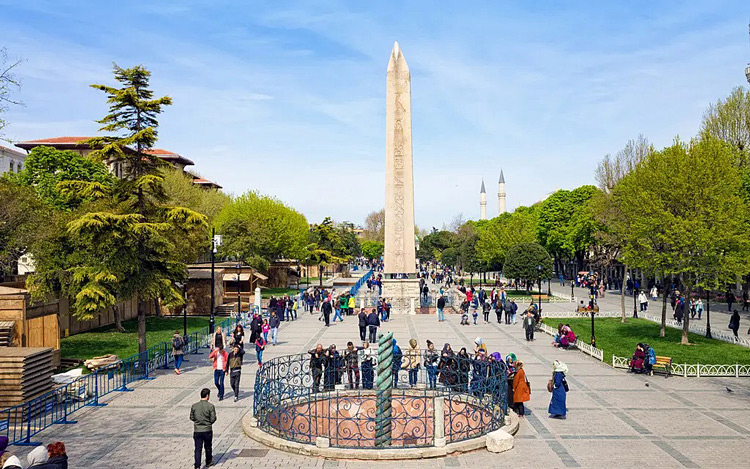
The Theodosius Obelisk was erected in the center of the Hippodrome, located in front of the Hagia Sophia and the epicenter of Byzantine social life. Constantine I, who built the Hippodrome, was also known as Constantine the Great. He was the Roman emperor from AD 306 to 337. Constantine I made Christianity the main religion of Rome and created Constantinople, which became the most powerful city in the world. The obelisk is 3,500 years old and was originally built in honor of the ancient Egyptian pharaoh Tutmosis III. During the Roman period, the obelisk was removed from Karnak Temple in Egypt and placed at the center of the Hippodrome’s chariot race track. During the Ottoman era, the Hippodrome was turned into a large public square and today is known as Sultanahmet Meydanı.
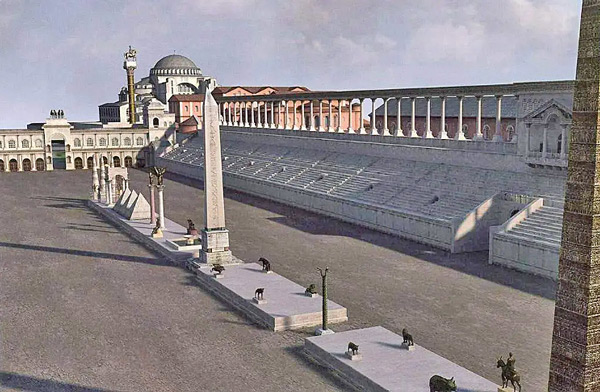
The Blue Mosque, also known as Sultan Ahmed Camii, was built on the foundations of the Great Palace of the Byzantine emperors. The mosque gets its name from the blue tiles that adorn the domed ceiling.

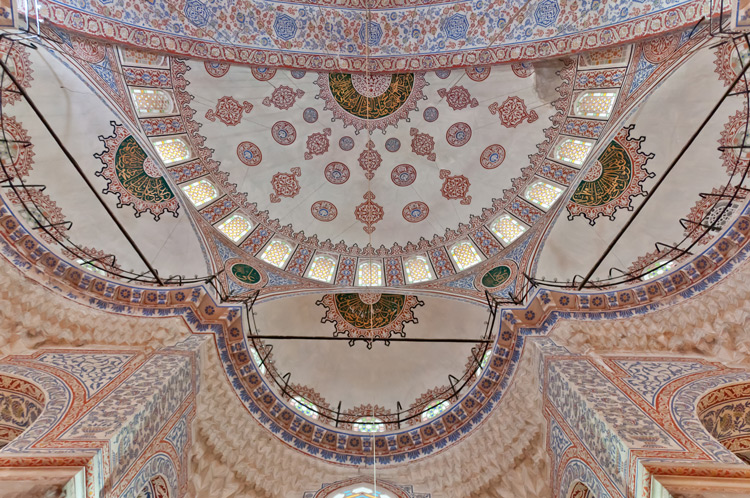
If you want to teleport to a time a few hundred years AD, walk behind the Blue Mosque and visit the Great Palace Mosaic Museum. The museum houses mosaics from the Byzantine period that were unearthed at the site of the Great Palace of Constantinople.
It is located in the Arasta Bazaar, our favorite bazaar. Comprising only 80 shops, it is a calmer and more curated shopping experience than the Grand Bazaar. The Grand Bazaar, however, is an experience not to be missed. The largest and oldest covered market in the world, with 61 covered streets and over 4,000 shops, it attracts between 250,000 and 400,000 visitors daily.
The Grand Bazaar: A Maze of Wonders
Get ready for a sensory overload as you step into the maze-like Grand Bazaar, an Aladdin’s cave of treasures waiting to be discovered. The air is thick with the aroma of spices, and vibrant stalls offer a dizzying array of plush carpets, intricate jewelry, and artisanal ceramics. Master the fine art of haggling with merchants, and don’t forget to reward your shopping victories with a steaming cup of Turkish tea or a bite of sweet Turkish delight (lokum).
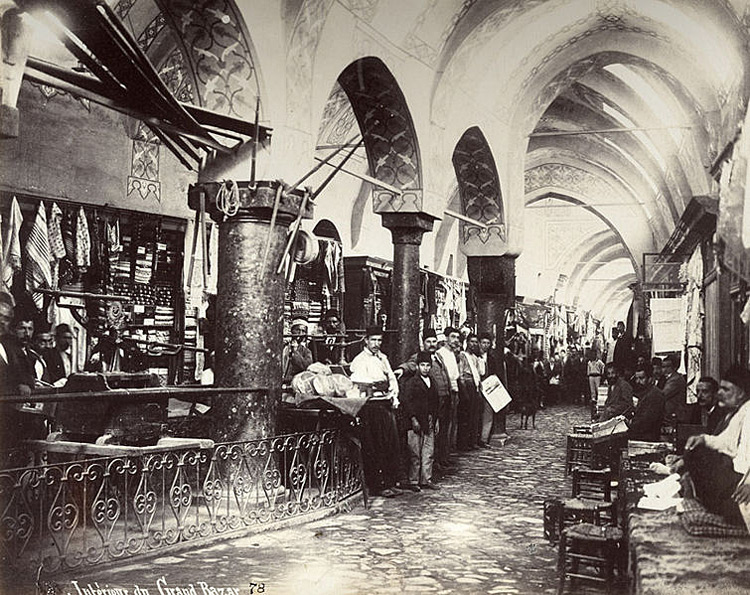

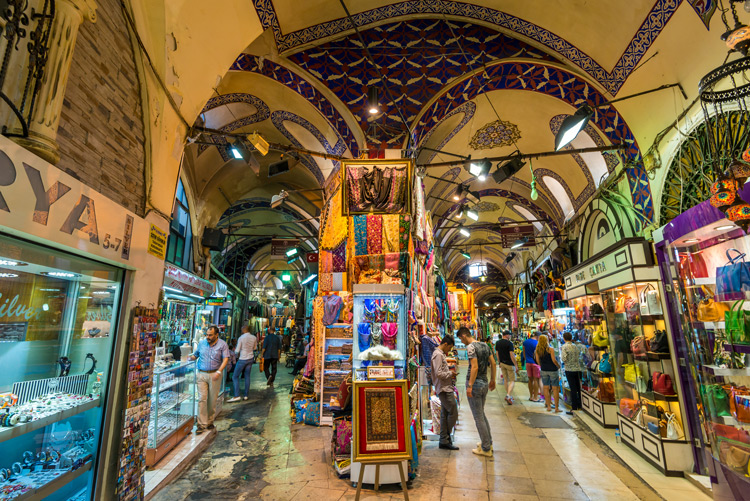
Now, after this lovely marketplace mayhem, it’s time to take a shopping sabbatical and head off to your daily gastronomic adventure. Coming up in Part II: More on Istanbul.
Well, that’s it for now. Stay well. I hope to say hello to you if you spot my boat, Life’s AOK. I bid you Fair Winds and Following Seas.
“Cover photo: View of Istanbul’s old town part at the entrance to the Golden Horn, featuring the Galata Tower in the foreground on the right. In the background, the Hagia Sophia Grand Mosque can be seen on the left, while the Sultan Ahmed Mosque (The Blue Mosque) is visible on the right, just over the edge of the Galata Tower’s roof.”
6 things I learned
- There is a considerable selection of good Istanbul guidebooks available. Here’s one to help you get started thinking about your journey: Istanbul City Guide Book.
- If you plan to visit Istanbul with your own boat, you can certainly do so, just like many large cruise ships and super yachts. There are a couple of marinas on the Bosphorus.
- If you’re arriving by air or land and hope to rent a boat without a captain, you might face some challenges. Pleasure boat rental companies typically require their own captain onboard.
- Navigating the waters of the Bosphorus, even if you’re an experienced boater, can be complex and demanding. It’s often best to relax and enjoy your tour of Istanbul from the sea with a charter boat captain to guide you.
- There are charter boats to suit various budgets, all well-equipped to satisfy even the most discerning visitors. Rest assured, it’s an experience you won’t soon forget.
- Here is a brief glimpse into the vast world of boat rentals in Istanbul, just to give you an idea of what’s out there.
4 things I recommend
- Allocate several days for your Istanbul visit. Don’t sell yourself short; it will be a truly unique experience.
- Anticipate crowds everywhere, including in transportation. To exacerbate matters, due to heavy traffic, Istanbul’s taxis are often selective about the destinations of their passengers. Some may not even stop to pick you up, even if they’re empty. It’s advisable to consider using Uber exclusively.
- Some others might display exaggerated ticket costs but still consider purchasing something like the Istanbul City Card, Viator, or Istanbul E-Pass. Museum Pass is also a good alternative. If you plan to visit some of Istanbul’s most famous attractions, these tourist passes are an option that reduces hassle. Besides granting admission to many popular historical sites, some of these passes also include a public transport card (bus, tram, metro), various tours and services.
- Plan for a comprehensive Bosphorus boat tour that may last up to 4 hours for a round trip, journeying from the strait’s southern end to its northern terminus at the Black Sea and back.
How easy?

Istanbul Marinas
Some of the notable marinas in Istanbul include:
Ataköy Marina: Located on the European side of the Marmara Sea, this is one of Istanbul’s largest and most equipped marinas. Relatively closer to the old town Istanbul, Ataköy Marina is accessible by air, sea, and highway transportation. The marina is just 27 miles away (40 minutes) from Ataturk International Airport. They also offer their guests a traffic-free transportation option with their “heliport.”
West Istanbul Marina: This is a relatively new addition, offering high-end facilities. It’s located on the European side of Istanbul but is somewhat removed from Istanbul’s old town area, which hosts the majority of the popular tourist attractions.

IstMarine Tarabya and Istinye Marinas: Situated on the European side along the Bosphorus, these marinas are celebrated for their picturesque setting and are a favored destination for yachters. Numerous waterfront restaurants are in close proximity, offering a wide range of dining options. Despite its relative proximity to Istanbul’s old town, the notoriously heavy traffic can make the journey feel much longer than it actually is.
Setur Kalamış & Fenerbahçe Marinas: Situated on the Asian side, these are among the most prestigious marinas in Istanbul, offering a range of facilities and services.
Marinturk Istanbul City Port Marina: Located on the Asian side, this marina is in Pendik, providing modern facilities for yachts. It is far from Istanbul’s old town area, which hosts the majority of the popular tourist attractions.
*ABR stands for our new series, “A Boater’s Rendezvous.” This series focuses on our voyages to far-flung locations that we wouldn’t dare go to with our boat. Being fair-weather boaters who must see land at all times, we don’t dare to go anywhere and everywhere with our boat, Life’s AOK. So we fly in, rent a boat (with or without a skipper), and enjoy the local waters and camaraderie.
Join us on our journey of discovery of other lands where we fly in and explore the joys of boating. We’re taking you with us, through our blog, “Trips of Discovery.” In this series, we’ll take you to some of the most historic and charming cities of the world and their waters suitable for pleasure boaters like ourselves. Who knows, you might even be inspired to plan your own adventure!
My wife and I hope you’ll be able to join us on the journey, either by boat or by a combination of flying and car. Don’t hesitate to reach out and share your own insights or experiences about the locations we visit. We’d love to hear from you and keep the conversation going! And if not, don’t worry, you can still follow along as an armchair travelers! So sit back, relax, and let’s embark on our Trips of Discovery of other waters.

